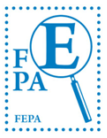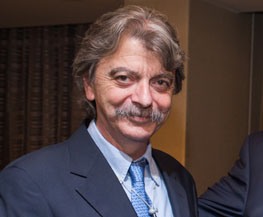Costas Chazapis answer to Gunnar Dahlvig’s opinions
On Gunnar Dahlvig’s pessimistic thoughts
Unfortunately, each and every one of Gunnar Dahlvig’s views recently presented in fepanews.com (http://fepanews.com/news/quo%20vadis) seems undisputable: Declining philatelic club membership figures, an immense number of new issues by the postal authorities worldwide, teenagers totally absent, fewer items sent through the post to our homes etc. They are drawbacks all right, but I am not sure they substantiate the author’s conclusion that “we perhaps have reached the bottom and at the best can stay where we are”.
In an ever changing world, our practices and habits have changed since, say, the 1986 point in time set by the author. That includes our re-evaluation of the usefulness of philatelic clubs, as they have lost their exclusiveness in providing companionship, in supplying knowledge etc., our resistance against the postal authorities’ flooding of new issues, the understanding of the youngsters’ need to commit to their studies, family and career before they mature and become ready to satisfy their philatelic endeavors.
In a slightly more optimistic tone we might say that now, more than ever, we can communicate with multiples of people faster and better, we can access large databases for our research needs, we can buy and sell at a fraction of time, we can produce websites, blogs, digital journals and the works, in full colour with high quality images at a fraction of the cost. Technology is continuously shaping up our lives, we are welcome to take full advantage of it and, most importantly, the best is yet to come.
On another line of thoughts, almost two centuries of diverse philatelic material is still out there, hidden in basements or attics, drawers or chests, waiting patiently for us to dust it off and reveal its secrets. It is a lot of material; more than plenty for each and every one of us to study and enjoy for the remaining part of his/her lifetime.
So, things don’t seem that bad. We can even make them better if we work on two major overhauls:
(a) “Philately” was once a precious and well respected term; not any more though. The term needs to be rebranded. The way our hobby is perceived by the non-philatelic audience is critical. The need for “Rebranding” along with “Technology” and “Partnerships” was brought forward by the American Philatelic Society in the “Summit on the future of philately” last October (http://stamps.org/userfiles/file/reports/FOP-Summit-Summary.pdf). The idea was wholeheartedly supported by us at the Hellenic Philotelic Society in our journal “Philotelia” no. 701 editorial (http://www.hps.gr/en/philotelia_editorial/701_editorial.htm) and it will be the subject of an upcoming symposium organized later this year.
(b) The objectives of “open” international philatelic exhibitions are badly ailing. We are not talking about exhibitions staged by exclusive philatelic organizations with reserved membership. We are talking about exhibitions under the patronage or support of the major philatelic bodies, which are “open” to the philatelists of the world. These objectives need to be redefined by advancing the exhibitors and their exhibits at centre stage. Let’s get rid of all the unnecessary pomp and circumstance, the superfluous glamour and related costs and most importantly the unreasonable sky-high frame and literature fees. Most of us when we entered the hobby we thought philately was meant to be for everybody not just for the very few. If we agree to protect our hobby, we have to start from the inside: to take care of our own people first; the exhibitors. Our own “Notos 2015” was designed and functioned on exactly these tracks (http://hps.gr/notos2015/). And it seems it worked rather well.
Going back to the 1986 time mark, I remember buying Kodak film to get the most vivid colours for the slides or prints of my two little children. Who would imagine! The giant Kodak filed for bankruptcy in 2012. Philately on the other hand is still alive.
Costas Chazapis




